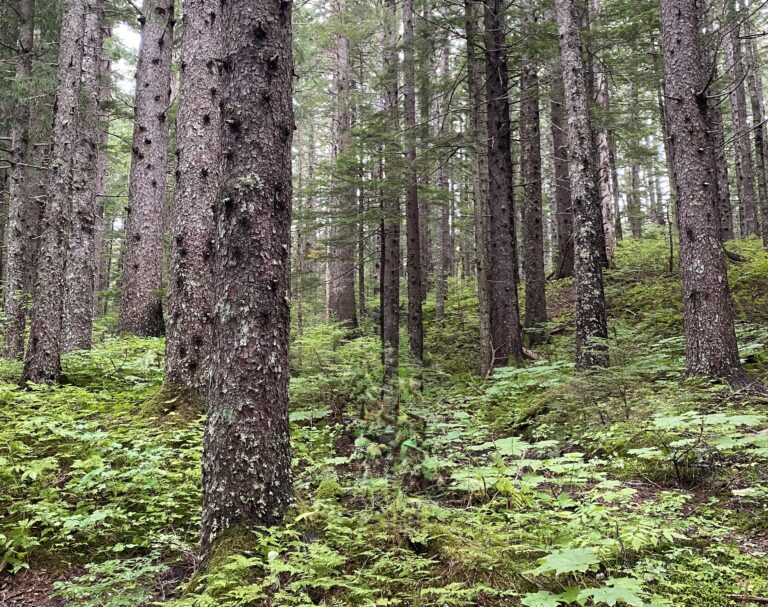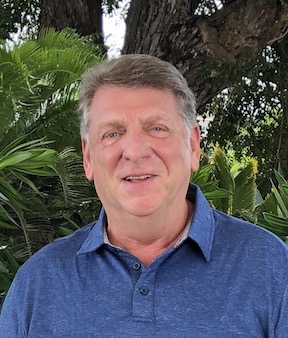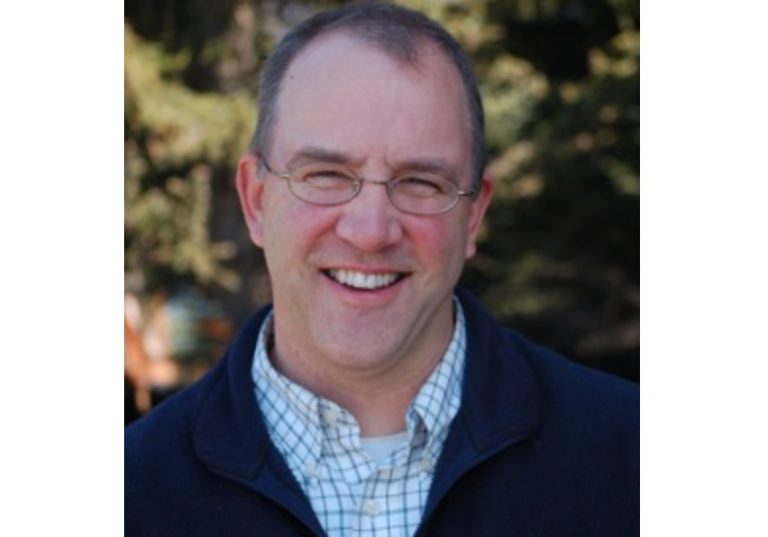By BRENDA JOSEPHSON
Nothing compares to the burst of flavor from a homegrown tomato, freshly picked from the vine and savored in its pure, raw perfection. This experience allows its essence to shine undiminished by cooking or baking.
Tomatoes are an excellent complement to a fresh catch, whether enjoyed in salads or alongside mozzarella in a caprese. They also shine in a classic bacon, lettuce, and tomato sandwich. Their vibrant colors and rich flavors enhance any dish, making them a seasonal highlight that many eagerly anticipate each year. Whether savored on their own or incorporated into a larger recipe, homegrown tomatoes truly celebrate the essence of the season.

Recipes for Zesty Alaskan Garden Medley, Caprese, Salad, and Balsamic Dressing are provided below.
Homegrown tomatoes often taste better because they are typically picked at peak ripeness, which allows their natural sweetness to shine. Furthermore, when you grow them yourself, you can control the growing conditions, ensuring they are free from pesticides and full of flavor. This personal touch enhances their taste and creates a sense of satisfaction and connection to the food you consume.
If you have the time and interest to grow vegetables, you may discover that it deepens your appreciation for the effort involved in cultivating food. Each harvest serves as a celebration of your hard work and commitment, promoting a healthier lifestyle and increasing your awareness of seasonal produce. The joy of consuming food that you have personally harvested can make each meal feel uniquely special.
In Alaska, our short growing season and cold temperatures present challenges when cultivating tomatoes. To achieve successful crops, Alaskan gardeners address these challenges by carefully selecting early-ripening tomato varieties, starting seeds indoors, and utilizing greenhouses and hoop houses for growth.
On a recent trip to Skagway, I visited Skip Elliott’s garden and greenhouses and was impressed by the wide variety of tomatoes he was growing. Skip is an avid gardener known for his successful harvests of kohlrabi and fava beans. My initial motivation for the visit was to check on his fava bean crop. I interviewed Skip last spring and wrote about the success he was having with his Alaska-grown fava beans in Foodies and foragers: Fabulous Alaska fava beans from garden trellis to table.
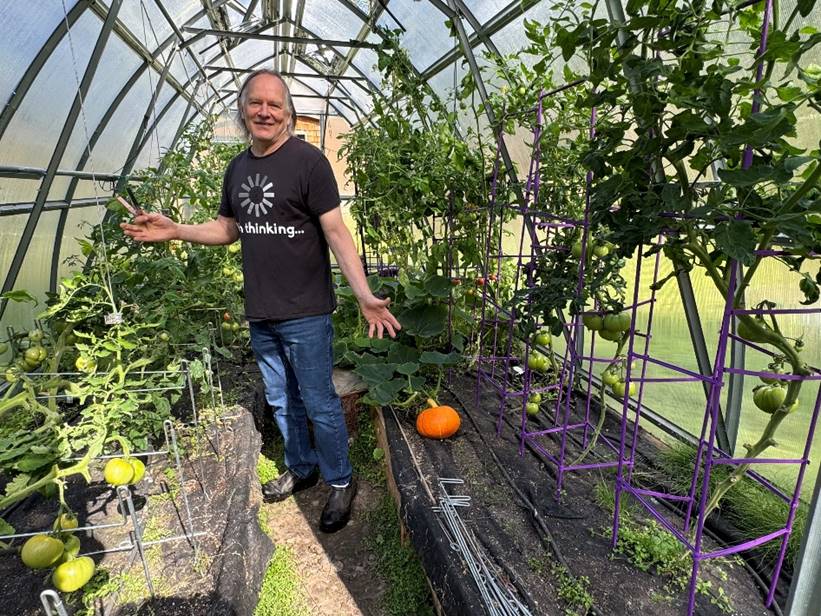
Despite a cold, wet start to summer and an infestation of little woolly bear caterpillars, his fava bean crop was thriving. However, as impressive as the fava beans are, his tomatoes—the real stars—were beginning to show their potential. The vibrant green vines were full of clusters of bright red and golden fruits in various sizes, ranging from cherry tomatoes to large slicers.


This was intriguing to me because each year, tomatoes are planted in my greenhouse with the hope of a bountiful harvest. However, recent seasons have led to disappointing yields. Consequently, I was eager to learn about the strategies that had worked well for Skip.
He mentioned that he is not an expert in growing tomatoes; however, for the past four years, he has embarked on a scientific quest to identify tomato varieties that thrive in our climate with a short growing season while also delivering desirable flavor. He evaluates desirability by conducting personal taste tests, where he compares the flavors of various tomato varieties in his growing conditions.
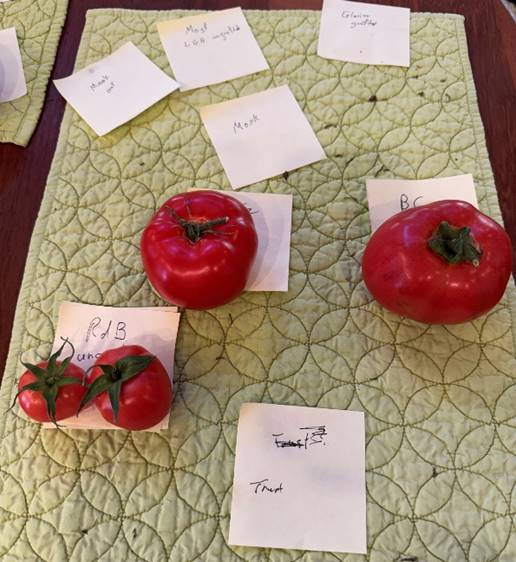
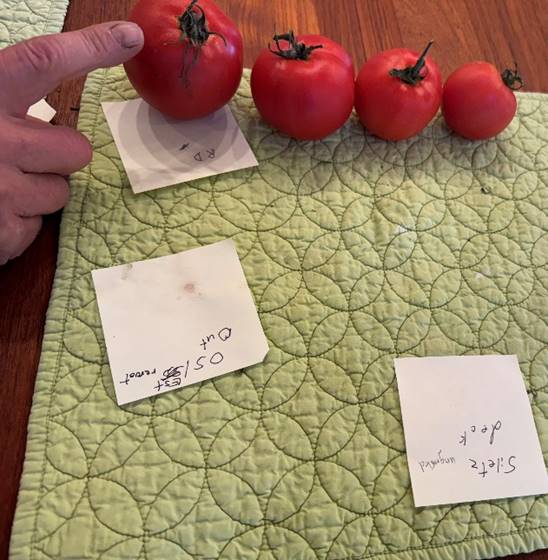
Skip’s tomato taste testing line-up
His research is ongoing, but in the hopes of improving next year’s tomato crop in my greenhouse, I asked him to share which varieties he has identified as top performers.
Skip discussed his method for narrowing down his top picks by evaluating them from multiple perspectives, including production costs, exceptional flavor, and harvest yields. He remarked, “It is hard to find a variety that tastes good and can be grown in abundance.”
Based on his research at this time, Skip identifies his top picks for cherry tomatoes as Artemis, Sungold, Sun Orange, and Esterina. Artemis is his favorite due to its vibrant red color, ease of growth, and uniquely delicious smoky flavor. Sungold performs well with a pleasant flavor profile. Sun Orange is similar to Sungold, but according to Skip, it has less tang and is a bit sweeter with the extra bonus of bearing more fruit per plant. Esterina makes the list with a note of caution regarding its tendency to grow excessively; however, Skip says it offers a fabulous flavor, and a benefit of its vigorous growth is that it continues to produce fruit into October.
When it comes to sauce tomatoes, Pilu is Skip’s top choice. He explains, “Pilu tomatoes are excellent for soups and sauces; they are cold-tolerant and yield well.”
Skip also holds Oregon Spring and Siletz in high regard, stating, “They are nearly identical; both are determinate, cold-tolerant, short-season varieties that grow in a small area. It’s amazing to see a plant that is only four feet high produce ten to twelve large fruits. You don’t need to do much work to grow them, and they thrive in greenhouses. They are not perfect slicers for sandwiches, but they are close.”
While in Skagway I also met with John McDermott, who has been growing tomatoes for over thirty years. When asked about his favorite slicer tomato, he was quick to mention the Mortgage Lifter. He explained that it is a well-established heirloom variety known for producing large fruits that are ideal for sandwiches.
Prepared with a plan to focus on specific tomato varieties for next year’s growing season, the final question was where to obtain the seeds. John emphasized the importance of sourcing from seed producers in the Pacific Northwest that have varieties that can thrive in our climate, which include Territorial Seed and Osborne Quality Seeds.
Other suppliers in the Pacific Northwest include Adaptive Seeds, One Green World Nursery, Uprising Seeds, Siskiyou Seeds, and a few additional companies. Some suppliers source their seeds from various regions, so it is essential to investigate the origins of the seeds before making a purchase.
Johnny’s Selected Seeds, located in Maine, sources some of its seeds from the Pacific Northwest, which are well-suited for Alaska’s climate. Tomato Growers in Florida have a strong track record of providing both seeds and supplies and also offer short-season tomato varieties that are productive in Alaskan greenhouses.
To achieve optimal results, take the time to research which seed varieties will thrive in your specific conditions and ensure you obtain them from reputable suppliers. This careful selection can result in a more abundant harvest of fresh tomatoes to enjoy.
Here are a few recipe ideas that showcase the fresh and vibrant flavors of vine-ripened tomatoes, highlighting their versatility in various dishes. You might enjoy preparing a Zesty Alaskan Garden Medley, creating a classic Caprese salad with fresh mozzarella and basil, or mixing up a simple balsamic vinaigrette to enhance a fresh garden salad topped with tomatoes.
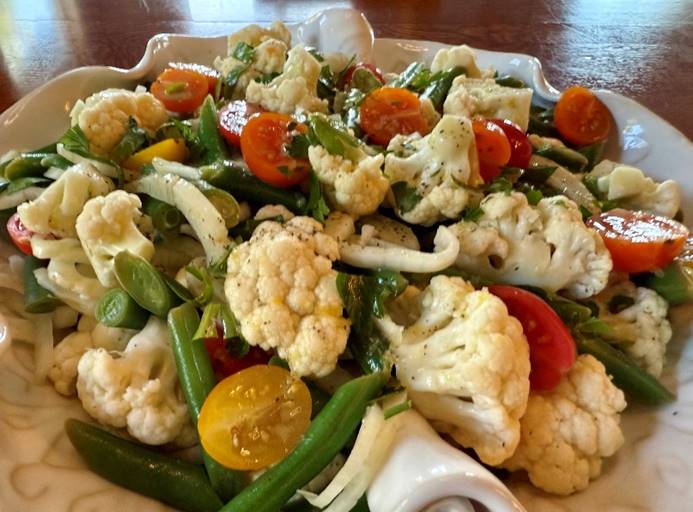
Zesty Alaskan Garden Medley
This refreshing cold dish features seasonal vegetables sourced from Alaskan gardens and is drizzled with a zesty lemon vinaigrette. Draw inspiration from your own garden to explore seasonal variations.
Medley Ingredients:
1 head of cauliflower (or substitute broccoli), cleaned, dried, and cut into florets
1 fennel bulb, cleaned, thinly sliced, and stored in water with lemon juice
(Alternatively, you can substitute one bulb of kohlrabi and add ½ teaspoon of ground fennel in the vinaigrette.)
2 to 3 ounces of lemon juice (as needed for fennel bulb lemon water)
8 ounces of green beans (or substitute snow peas or sugar snap peas),
cleaned, cut, and blanched
1 ½ cups of cherry tomatoes, halved (or cubed tomatoes)
½ cup parsley, chopped (for the garnish)
Zesty Lemon Vinaigrette Ingredients:
2 lemons, zested and juiced (or substitute 5 of ounces lemon juice)
1 tablespoon minced shallots (or substitute 1 small garlic clove, minced)
1 teaspoon Dijon mustard
1 teaspoon fresh thyme (or substitute ½ teaspoon dried thyme)
5 ounces olive oil
¼ teaspoon salt, more or less to taste
½ teaspoon freshly cracked black pepper, more or less to taste
Yields approximately 8 servings.
Preparation:
The lemon vinaigrette is made by mixing together lemon juice, lemon zest, minced shallots, Dijon mustard, and thyme. Use a whisk or immersion blender to blend the ingredients until the mixture is smooth. Then, slowly drizzle in the olive oil to help the ingredients emulsify. Season with salt and pepper to taste. Set the vinaigrette aside while you prepare the vegetables.
Next wash all the vegetables under cool water, then trim and cut them as indicated above. To prepare the fennel bulb start by cutting the bulb in half and then slicing it very thinly. Have a bowl with lemon water available to transfer the fennel slices. Store the fennel in the lemon water while blanching the green beans.
Blanch the green beans by placing a large pot of water on the stove over high heat, ensuring there is enough water to fully submerge the beans. Add salt to the water at a rate of approximately 1 teaspoon per quart. While waiting for the water to boil, prepare a bowl filled with ice water for an ice bath. Once the water reaches a boil, add the green beans and allow it to boil again. Boil the green beans for one minute. After boiling, drain the green beans and immediately transfer them to the ice bath to stop the cooking process. The goal is to have the green beans blanched but still crisp. Once they are chilled, drain the beans again and refrigerate them while you prepare the other ingredients.
When all the vegetables are prepared, drain the fennel and combine all the vegetables together in a large bowl and gently toss together while drizzling with the lemon vinaigrette taking care to evenly coat the vegetables. Garnish by sprinkling the chopped parsley on top.
Store under refrigeration, serve cold to enjoy this crisp and fresh seasonal garden medley.
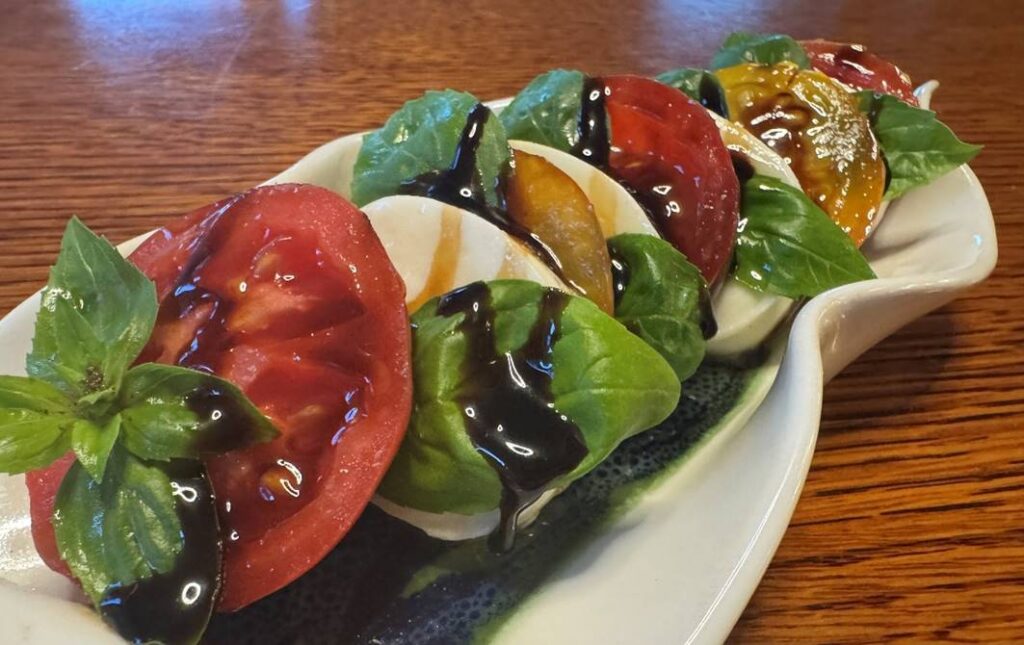
Classic Caprese Salad
It doesn’t get any easier to enjoy vine-ripened tomatoes than with a Caprese salad. This recipe is quick and can be easily adjusted to make use of just one tomato at a time as they ripen. You likely already have balsamic vinegar and olive oil in your pantry; if that’s the case, all you need to add to your shopping list is some fresh mozzarella from the market.
Ingredients:
2 cups of balsamic vinegar
3 to 4 tomatoes, sliced
12 ounces fresh mozzarella cheese, sliced
1 bunch of fresh basil leaves
1 ounce olive oil, more or less for drizzling
Salt and freshly ground black pepper, to taste
Yields approximately 4 servings
Preparation:
Place the balsamic vinegar in a small saucepan over medium-high heat and bring it to a boil. Then, reduce the heat to medium-low and let it simmer for about 15 minutes, or until it has reduced by half and has thickened to a glaze that coats the back of a spoon. Remove the saucepan from the heat and transfer the glaze to a separate container to cool.
Just before serving, layer the tomatoes, fresh mozzarella cheese, and fresh basil on a serving dish, alternating each ingredient. Drizzle the arrangement with olive oil, followed by the balsamic glaze. Finally, sprinkle with salt and freshly ground black pepper.
Enjoy the Caprese salad by itself or paired with crispy bread.
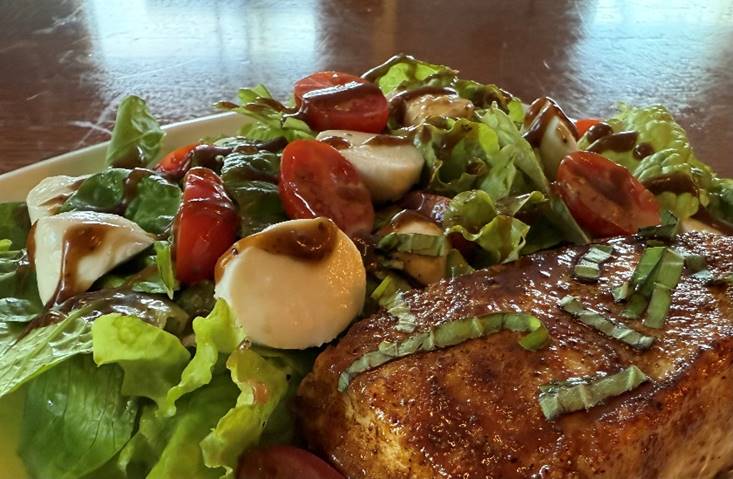
Balsamic Vinaigrette
This recipe is an excellent go-to for dressing a wide range of salads. It is simple to prepare, and the inclusion of Dijon mustard aids in the easy emulsification, resulting in a smooth consistency that coats the lettuce without being too thick. You can adjust the flavors to suit your preferences by varying the amount of olive oil and finishing the dressing with your desired level of salt and freshly cracked black pepper. Additionally, this dressing keeps well in the refrigerator for several days; just remember to stir it thoroughly and let it reach room temperature before using it on your salad.
Note: The balsamic-glazed halibut shown in the picture above was prepared by spooning a light glaze of balsamic reduction over pan-seared halibut just before removing it from the sauté pan.
Ingredients:
½ cup balsamic vinegar
1 tablespoon minced shallots (or substitute 1 small garlic clove, minced)
1 teaspoon Dijon mustard
1 teaspoon fresh basil (or substitute ½ teaspoon dried basil)
1 cup of olive oil
¼ teaspoon salt, more or less to taste
½ teaspoon freshly cracked black pepper, more or less to taste
Preparation:
Combine balsamic vinegar, minced shallots, Dijon mustard, and basil in a bowl or mixing container. Using a whisk or immersion blender, mix the vinegar, shallots, mustard, basil, until they are fully incorporated. Slowly drizzle in the olive oil to allow for emulsification. Season with salt and pepper to taste. Add more of the olive oil if the flavor is too tangy for your taste preference. Set the mixture aside while preparing the vegetables.
Enjoy the bold and sweet flavor of this dressing, which beautifully complements grilled seafood or chicken, adding a delightful tang to your meal. Additionally, this dressing works well as a substitute for drizzling over sliced tomatoes and fresh mozzarella in a Caprese-style dish.
Brenda Josephson is a Haines resident. She enjoys spending time fishing, foraging, and savoring Alaska’s abundance of natural and wild foods with her family. Brenda serves as a board member of Alaska Gold Communications, Inc., the publisher of Must Read Alaska. You can contact her by email at [email protected].

